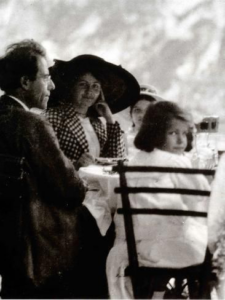From the Nashville Symphony
Opening Night with the Nashville Symphony

On the weekend of September 13-14, the Nashville Symphony presented its season opening concert with a performance of Sergei Rachmaninoff’s Rhapsody on a Theme of Paganini featuring Joyce Yang, and Gustav Mahler’s 5th Symphony. This season is Guerrero’s last (here), and he has billed the season and this concert as a “…celebration of the virtuosity found within the orchestra,” and indeed it was.
The evening opened with the Rachmaninoff, and it was a joy to watch Yang dance with the keyboard, smiling and engaging with the orchestra, sometimes aggressive, sometimes consoling, but always right in time and in rapturously fluent dialog. I especially enjoyed her (and Maestro Guerrero’s) nuanced integration of the Dies Irae, the old Catholic chant for the dead which appears in a number of variations throughout the piece.
From a purely abstract point of view, the combination of the bouncy, virtuosic theme from Paganini’s 24th Caprice against the old chant for the dead might not seem to make sense—except for Paganini’s theme and variations are devilishly difficult to play at speed. Here is a wonderful example. Rachmaninoff likely added the Dies Irae to his work as an expression of the common belief in the 19th Century that Paganini had signed the same diabolical contract that Robert Johnson would 60 years later, selling his soul for talent and fame.
While I doubt she signed any diabolical contract, Yang’s engagement with the piece was ferocious and the orchestra seemed to feed off her excitement. It was positively charming at the end when she jumped up to hug Maestro, not least because the performance was something quite the opposite of evil! In an exceptionally long concert, after a third round of ovations, Guerrero brushed off the piano bench to allow Yang an encore—a darling performance of Gershwin’s “The Man I Love”. We were swept into a brief intermission with stars in our eyes.

Gustav Mahler composed his 5th Symphony during the summers of 1901-2, in a lakeside villa he had built for that purpose and at a highpoint in his life; He was still happily married with two children and directing the prestigious Vienna State Opera. The symphony is in an epic style and is quite long, typically 70 minutes in performance. In five movements across three parts, it was his first symphony to be conceived in an absolute way, with little outside narrative influence, and it reflects his life at that point in a heroic style, opening in with a tragic funeral march and proceeding to a victorious finale, after a pivot on a heartbreaking adagietto.
The Symphony is notoriously difficult for an orchestra to perform and a director to conduct. For example, in the recent motion picture Tár, the title character destroys her career in a single-minded pursuit of a recorded performance of Mahler’s 5th. I am sure it is no coincidence that Guerrero chose this work to top off his time in Music City and to celebrate our fantastic orchestra.
The first movement opens with a famous trumpet solo, an instrument that Mahler was quite fond of and which here quotes an Austrian military theme. It was played wonderfully by Nashville’s William Leathers, a solo declared with a degree of confidence that could only presage a fall. This slow opening proceeded into the tragedy of the second movement in an excellent manner, and Guerrero took great care in maintaining the unity of the two opening movements despite their bi-polar character of nostalgia and frenzy—at the end of this part I found that I had been holding my breath for some time.
Part II opens with a fierce Scherzo based on the Ländler, and into which Guerrero embarked at a furious pace—reminiscent of Benjamin Zander’s blistering recording. The horn solo played by Leslie Norton opened gently, and the balance between the winds and strings was wonderfully tempered by Guerrero, a tempering you could see him achieve through dramatic activity on the podium. However, it was in these moments that the brass began to emerge a bit more forte than might have been expected, an issue that would return.

The following Adagietto was dedicated at the top by Alan Valentine to Dewayne Pigg, a recently deceased English Horn player and 25-year veteran with the Nashville Symphony who was an organizing champion of the orchestra during the “bad old days” and longtime Professor at MTSU. This is the movement that Alma Mahler convincingly argued her husband wrote to describe his love for her, and it is probably his most famous (and most recorded) piece of music. On Saturday It was simply beautiful. Licia Jaskunas’ harp kept a perfect, gentle pace as Peter Otto’s violin section was purposefully bold in clarity and thankfully avoiding a slip into the saccharine. A chestnut of lament in the modern symphonic repertoire, the fact that it was dedicated to one of Nashville’s own made its performance here even more poignant.
In the finale, Mahler brings back many of the ideas from previous movements in a sophisticated counterpoint, again handled with grace by the maestro. It is not so much a reprise as a glorious reinterpretation after all that has gone before—and in this performance Mahler’s aspera ad astra (through struggle to the stars!) found a wonderful vehicle in Guerrero and the Nashville Symphony. If the Maestro let the brass section loose at the top of it all, who can blame him? Certainly not the audience in Nashville as they leapt to their feet in ovation. I am so happy that the new season has begun! The Nashville Symphony returns at the end of the month with Wagner and Dvořák featuring Simone Porter on Violin and Lidiya Yankovskaya as guest conductor.




